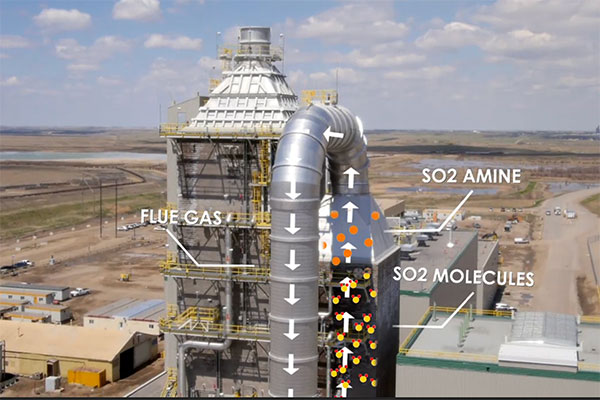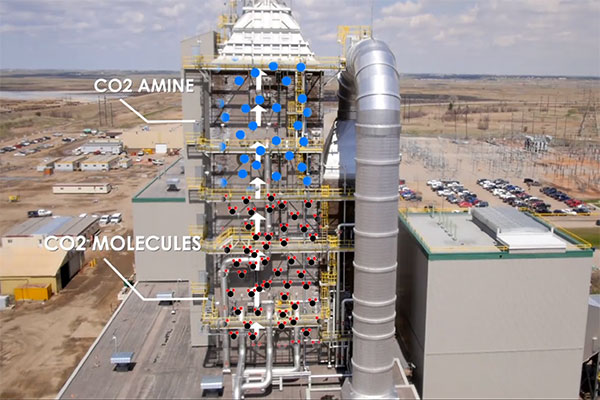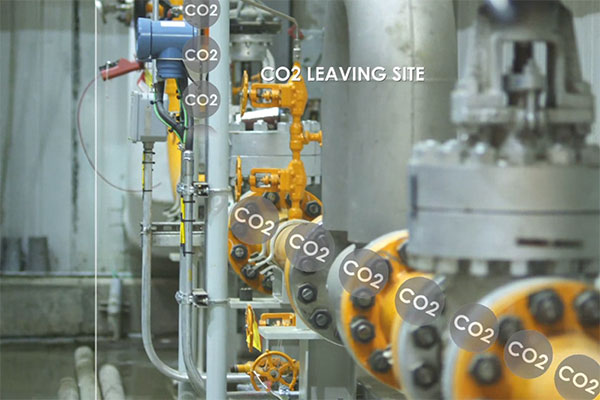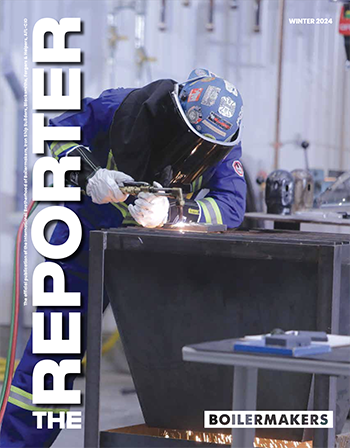We’re out there promoting a solution with CCUS. Preserve well-paid, meaningful jobs, increase job opportunities while mitigating greenhouse gas emissions.
With the Intergovernmental Panel on Climate Change recently releasing an alarming report on the critical state of the environment and calling for immediate action, it would be foolhardy for the United States and Canada to overlook carbon capture, use and storage as a significant part of the solution. As outlined in a previous article in this series, “Clean energy’s dirty little secret,” renewables have ethical and operational problems, which include energy grid reliability, environmentally friendly disposal and the mining of rare earth metals.
The warming of the planet is causing havoc across the globe. There is no time to wait for the renewables industry to solve the planet’s immediate issues, because renewables have multiple complications of their own. And there’s no time to wait for science to innovate new technologies. The world needs solutions that can be implemented immediately, such as CCUS.
“What the Boilermakers seek is a realistic solution that considers all low-carbon or no-carbon technologies: renewables, CCUS-enabled fossil fuels, nuclear, hydrogen and other energy sources,” says International President Newton B. Jones. “We need a diverse and open approach to dealing with climate change, not a slash-and-burn approach that will destroy targeted industries and jobs and upend the economy.”
Unfortunately, radical environmentalists are against carbon capture, dismissing the technology used to eliminate at least 90% of carbon emissions on industries using fossil fuels, simply because it will extend the use of fossil fuels. In the future, North America may have the technology to ethically install a pollution-free means of energy production. But the technology is not there yet. North America isn’t even close to taking promising technology and scaling it up to meet complex energy demands without the implementation of CCUS.
International Director of Climate Change Policy Solutions, AD-CSO/Canada Cory Channon says environmentalists don’t have the complete picture concerning the elimination of fossil fuels. “I’ve had people approach me and say ‘CCUS is great, but don’t you feel you’re enabling and extending the end of the fossil fuel industry?’ But one reason I’m advocating for CCUS is because you need the fossil fuel industry to manufacture the renewable industry.”
Using CCUS in North America will safeguard jobs while protecting the environment. According to the IEA Greenhouse Gas R&D Programme, the basics of CCUS, capturing CO2 and preventing it from being released into the atmosphere, was first suggested in 1977. But carbon capture has been around for about 100 years. It’s been used since the 1920s for separating CO2 sometimes found in natural gas reservoirs from the saleable methane gas. And today, CCUS technology can be applied to existing fossil fuel power plants, petrochemicals, biomass and refineries.
Another issue environmentalists have with CCUS is the cost of implementation. But the price tag on CCUS is falling. The Carbon Sequestration Leadership Forum, an international climate change initiative focused on the development of cost-effective technologies for carbon capture and storage, released its 2021 Carbon Sequestration Roadmap. The report found that baseline costs for carbon capture have decreased 15% to 20% due to research, development and demonstration, making an even stronger case for time-tested CCUS technology. In addition, CSLF found that hydrogen production from natural gas with CCUS has emerged as a method that can contribute to a rapid transition to a hydrogen-based society. And hydrogen burns clean.
The report also stated: “A great majority of climate scenarios show that CCUS will play a crucial role in reducing direct emissions from industrial processes and the use of fossil fuels in power generation, industry, and fuel transformation. CCUS is particularly important for hard-to-abate industries.”
If politicians and radical environmentalists can lose the rhetoric and come to the table with organized labor and the scientific community, carbon capture would be the solution to implement immediately to cut emissions. It’s already been done. Boilermakers and other skilled trade workers have already built and retrofitted existing facilities for carbon capture.
In Boilermakers’ oldest carbon capture project dating to 2008-2009, American Electric Power’s Mountaineer power plant in New Haven, West Virginia, began capturing CO2 from a slipstream of exhaust flue gas and pumping it deep underground, below the plant, for permanent storage in a saline formation. The project required retrofitting an advanced chilled-ammonia system to the existing coal-fired plant, work performed by Boilermakers and other building trades. The chilled-ammonia process absorbs CO2 using ammonium carbonate. The resulting ammonium bicarbonate slurry is converted back to ammonium carbonate in a regenerator and is reused to repeat the process. The flue gas, cleaned of CO2, flows back to the stack.
In 2014, the Boundary Dam Power Station in Saskatchewan, Canada, changed the energy landscape when instead of retiring an aging unit, transformed Unit 3 into a dependable power producer using CCUS. It’s now a reliable 120 MW producer of base load power. Boilermakers were the workforce behind the project.



Take a detailed digital tour of the Boundary Dam CCS facility at www2.saskpower.com/ccs/tour
Boundary Dam’s approach to capturing CO2 channels flue gas through a two-stage process. In the first stage, sulfur dioxide is absorbed into an amine solution and sent to a stripper, which pulls out the SO2 for additional processing. With the SO2 removed, the flue gas then enters a second absorber, where another amine solution binds with the CO2. A second, larger stripper separates the CO2 into a pure stream for delivery to a compressor room, where it’s converted to a liquid and piped off-site. Much of it is shipped 41 miles by pipeline to oilfields for enhanced oil recovery. Surplus CO2 is injected two miles deep into a brine and sandstone water formation for geologic storage.
Using carbon capture, Boundary Dam removes up to 1 million tons of CO2 a year. That’s equal to taking more than 250,000 cars off the road.
The evidence is massive that solutions are critical to combating the conditions of a gradually warming planet that’s causing increasingly deadly weather. And solving the issue can’t happen without deploying all the technologies available right now. That includes carbon capture, hydrogen and renewables.
“The narrative that’s been created, that we’ve been led to believe, is that hydro, wind and solar are green and will live forever. That’s wrong. We’ve been misled,” Channon says. “We’re out there promoting a solution with CCUS. Preserve well-paid, meaningful jobs and increase job opportunities while mitigating greenhouse gas emissions.”
Editor’s note: This is the third and final story in a three-part series on climate change. The first two articles, “Boilermakers: ahead of the green curve” and “Clean energy’s dirty little secrets” are available at www.boilermakers.org.






